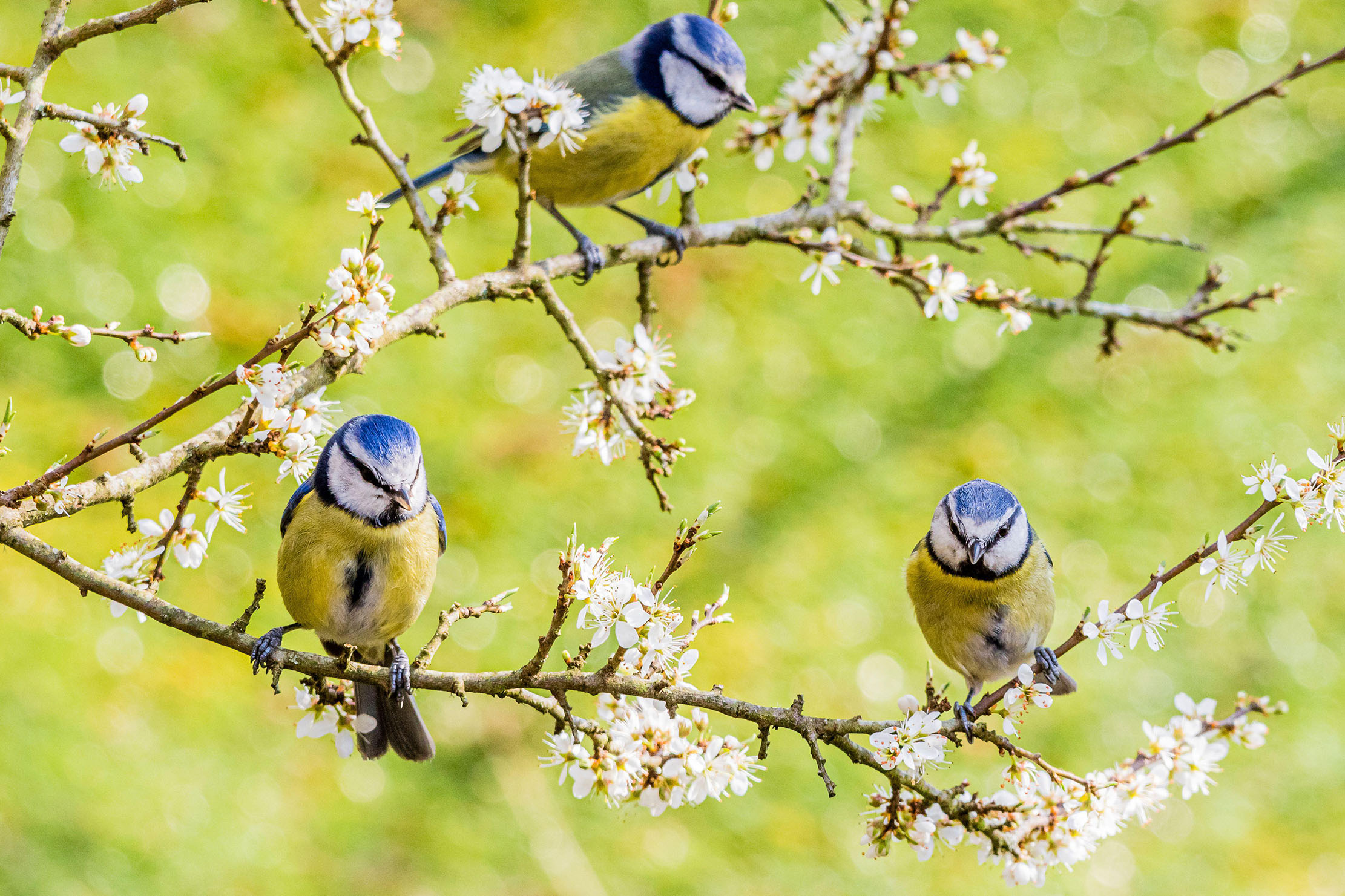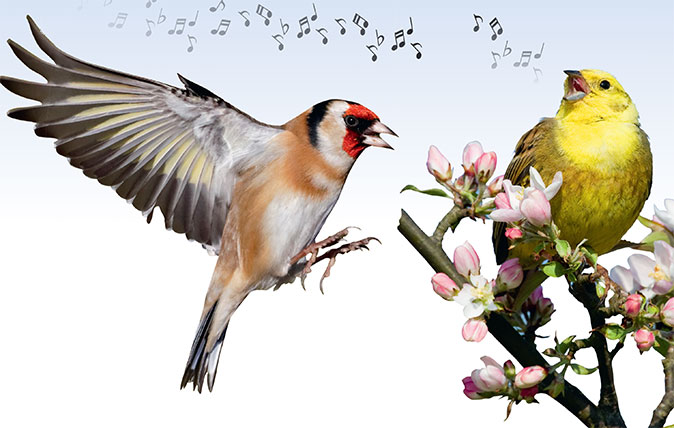The Blue Tit: The cheerful harbinger of Spring
Victoria Marston takes a look at the cheerful, colourful bird whose busy activity is such a feature of the season.


Although seen all year, blue tits have an affinity with springtime, hopping busily among blossom-laden branches, wearing pale-yellow and blue plumage that seems to echo the season’s cheering daffodils and bluebells. Small, fluffy-looking and hyperactive, their restless activity has its own charm — but it’s also practical, keeping them alert to predators, particularly parrowhawks.
Holes in trees make preferred nesting sites, but Cyanistes caeruleus readily uses a nest box when offered, building a cosy cup of moss, wool, hair and feathers into which some 8–12 eggs will be laid. A sodden breeding season can be disastrous, as caterpillars for the chicks become scarce.

They can be helped with the provision of suitable small-seed mixtures without whole nuts, such as Peckish Nesting & Young Bird Mix or suet foods containing insects.
Some two-thirds of fledglings won’t survive a year and three years is the best most can hope for, but juveniles can be recognised by their pale-yellow cheeks, which turn white with adulthood. The oldest recorded bird reached the grand old age of 21 — a veritable Methuselah.

Credit: Country Life / agencies
The magic of birdsong: How much magnificence can you pack into one tiny wren?
Entranced by a tiny bird in the woods, Jay Griffiths explores the bewitching effect of the avian voice in her

The 8 best birdsongs you'll hear in Britain
Which eight birdsongs would you choose as the soundtrack if you were stranded on a desert island? David Tomlinson picks
Exquisite houses, the beauty of Nature, and how to get the most from your life, straight to your inbox.
Country Life is unlike any other magazine: the only glossy weekly on the newsstand and the only magazine that has been guest-edited by His Majesty The King not once, but twice. It is a celebration of modern rural life and all its diverse joys and pleasures — that was first published in Queen Victoria's Diamond Jubilee year. Our eclectic mixture of witty and informative content — from the most up-to-date property news and commentary and a coveted glimpse inside some of the UK's best houses and gardens, to gardening, the arts and interior design, written by experts in their field — still cannot be found in print or online, anywhere else.
